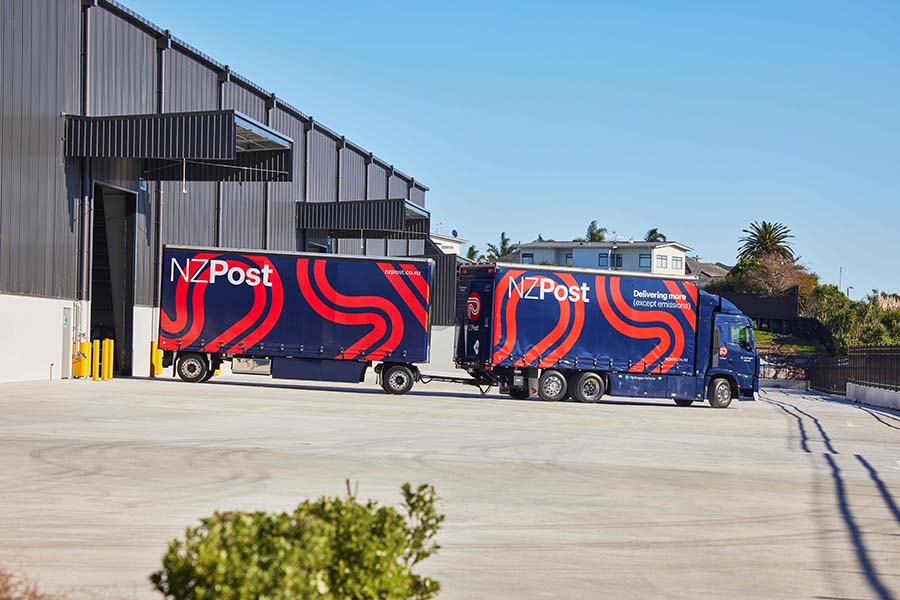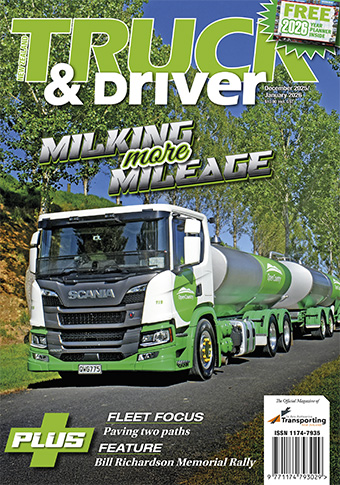Aeolus Truck & Driver News


Low Emissions Transport Fund winds down
Aeolus Truck & Driver News
The final projects approved for co-funding by the Low Emission Transport Fund have been announced, taking the total investment commitment in low-and zero-emissions transport projects – on road, off-road and on water – to about $265 million over the past decade.
The Low Emission Transport Fund, administered by EECA (Energy Efficiency and Conservation Authority), was revised in 2021, expanding the remit of its predecessor the Low Emissions Vehicle Contestable Fund (LEVCF), which launched in 2016.
Richard Briggs, EECA’s Group Manager – Delivery and Partnerships, says the LETF has unlocked an extraordinary amount of private capital for projects that would not have happened as quickly or at all, as well as lowered organisations’ operating costs by improving energy efficiency and productivity.
...The final projects approved for co-funding by the Low Emission Transport Fund have been announced, taking the total investment commitment in low-and zero-emissions transport projects – on road, off-road and on water – to about $265 million over the past decade.
The Low Emission Transport Fund, administered by EECA (Energy Efficiency and Conservation Authority), was revised in 2021, expanding the remit of its predecessor the Low Emissions Vehicle Contestable Fund (LEVCF), which launched in 2016.
Richard Briggs, EECA’s Group Manager – Delivery and Partnerships, says the LETF has unlocked an extraordinary amount of private capital for projects that would not have happened as quickly or at all, as well as lowered organisations’ operating costs by improving energy efficiency and productivity.
“The programmes demonstrated the benefits for business in making the switch to low or zero-emissions vehicles, machines, and vessels, showing others in their sectors what’s possible and viable,” says Briggs.
Briggs says the rapid acceleration of energy-efficient transport technologies has reduced the risk for early adopters and the need for this type of support. As such, the LETF has wound down to a natural end.
Milestone projects include the world’s first electric milk tanker (Fonterra) and electric hydrofoil ferry in commercial operation (Vessev and Fullers 360).
The fund supported New Zealand’s first hydrogen-powered truck (NZ Post) and bus (Auckland Transport), first electric double-decker buses (Tranzit, Metlink, Greater Wellington Regional Council) and first electric supermarket delivery vans (Foodstuffs).
The LETF also co-funded around half of New Zealand’s 1300+ public EV chargers, with almost 700 more in the pipeline. These include the country’s first high-speed DC chargers (ChargeNet).
Briggs says EECA continues to support the heavy vehicle sector to improve its energy efficiency and lower operating costs through the Low Emissions Heavy Vehicle Fund, which offers grants of up to 25% of the purchase price of a new zero-emissions heavy vehicle, or 25% of the cost to convert an existing ICE vehicle to be power by zero or low-emissions technologies.
EECA would ensure successful delivery of previously co-funded projects, as well as provide data on EV charging infrastructure and fuel use across the transport sector, Briggs said.
“EECA is New Zealand’s lead agency and expert voice on energy use and we’re continuing to evolve to ensure we’re best placed to support the market.”
Projects approved for funding in the LETF’s final rounds – 14, 15 and 16 – will support vehicle, marine, off-road and technology projects.
They include a demonstration of autonomous battery electric container terminal tractors at the Port of Napier, a project for CH2NGE Technologies to develop a hydrogen refuelling vehicle to support off-road vehicles, development of a 100% electric refrigerated semi-trailer by Action Manufacturing and an electric straddle carrier trial at Port of Tauranga.
The Port of Lyttelton will replace both a diesel-powered sweeper truck and a diesel- powered empty container handler with BEV equivalents and Freightways Group plans to demonstrate a DC charging solution in Auckland that connects to the high voltage network.



 + EQUIPMENT GUIDE - FREE
+ EQUIPMENT GUIDE - FREE
